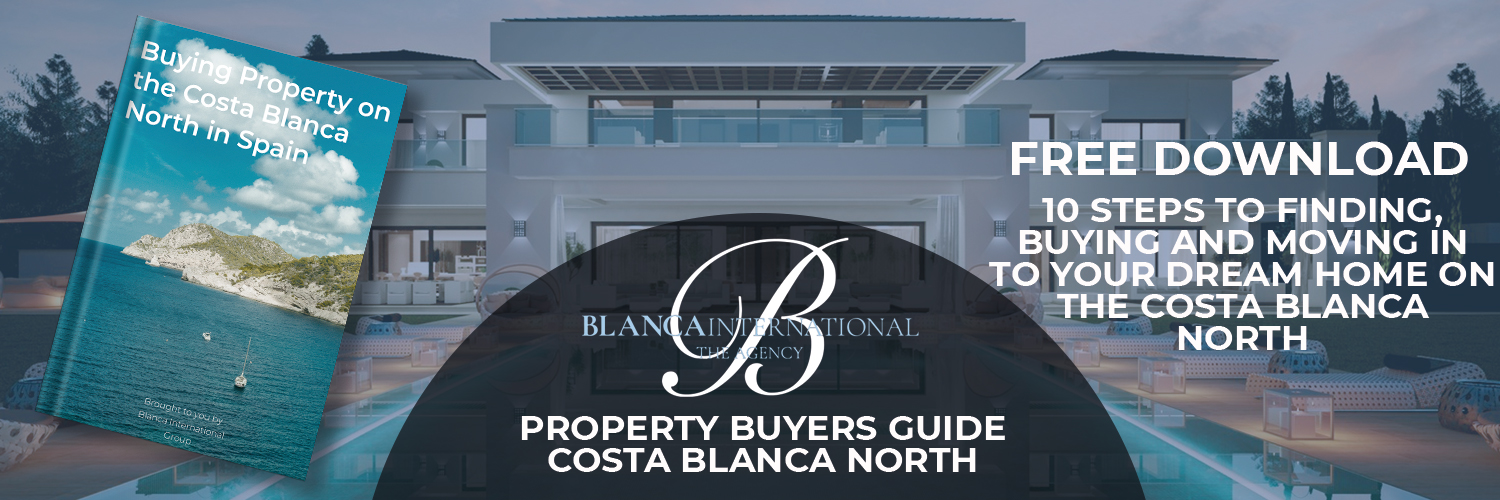The festival in honour of the Mare de Deu de Loreto sees the port area of Javea at its most magical. As they are known in Valenciano, the Festes Mare de Deu de Loreto (Festivals of Our Lady of Loreto) take place each year from late August until just after children return to school in September.
Javea locals refer to the Mare de Deu de Loreto festivities as marking the ‘end of summer’. Read on to learn about the history of Javea’s most maritime festival of the year.
Picture credit: Xabia.org
Also read: Javea Festivals
When is the Mare de Deu de Loreto festival in Javea?
Late August until September 8th.
Where is the Mare de Deu de Loreto festival in Javea?
Duanes de la Mar, aka the port area of Javea.
What’s the highlight of the Mare de Deu de Loreto festival in Javea?
Depending on your taste:
- The fierce competitors of Valencian handbell (raspall) in Calle Virgen de Loreto
- The solemn procession of the Mare de Deu de Loreto on her feast day September 8th
- The iconic Bous a la Mar aquatic bull-running event
- The aquatic fireworks display at nightfall on September 8th
- Drinks and freshly caught seafood at the baret in the harbour
The miracle behind the Mare de Deu de Loreto
So much of Javea’s history is steeped in miracles and legends.
The story of how the icon of the Mare de Deu de Loreto arrived in Javea is no different. It’s even likely the story changes depending on who you ask!
Here’s the official version from the Xabia tourism portal:
- In 1850, an Italian boat ran aground on the Cap Prim headland.
- Javea fishermen arrived to save whatever and whoever they could – but all they recovered was the ship’s bell and an icon of the Mare de Deu de Loreto (Our Lady of Loreto).
- Since Our Lady of Loreto is a common patron saint for air forces, the navy and many seafaring towns in Spain, it was only natural this Virgin Mary became the patron saint of Javea’s port parish (La Parroquia del Mar) and neighbourhood (Duanes de la Mar).
For background info, Our Lady of Loreto is a whole miracle in itself. The story originates with the Santa Casa where the Virgin Mary received the Annunciation that she would bear a child, Jesus Christ.
During the Crusades, the Santa Casa is said to have miraculously crossed the sea from Palestine to Dalmatia in modern day Croatia. Three years later, on December 10 1294, the Santa Casa was moved across the Adriatic Sea to Italy where it was placed among bayleaf bushes – the Latin name for ‘place filled with laurels’, lauretum, gave its name to the Italian town of Loreto which remains a hugely popular pilgrimage site to this day.
The 10th of December is typically the feast day for Our Lady of Loreto – but Javea celebrates the day on the 8th of September along with Santa Pola further south and Bejís in Castellón further north.
Javeamigos.com carries the story that Javea fisherman sought the safety of the Mare de Deu de Loreto long before the supposed 1850 shipwreck in a special sanctuary just outside the walls of the Javea old town. The account throws into jeopardy the 125th anniversary of the Mare de Deu de Loreto festivals which took place in 2021.
While this former church is long gone, there’s a small fountain depicting the Santa Casa and the Mare de Deu de Loreto in the Plaça Vicent de Gràcia in the Old Town of Javea.
Whatever the origin of the Mare de Deu de Loreto is, she is most venerated by the traditional fisherman families of Javea. A more recent legend has it that a group of Javea fishermen prayed to her for deliverance from a terrible storm, promising to build a new church to her honour should they reach the shore in one piece.
The Iglesia de la Mare de Deu de Loreto was built in the 1960s.
It’s an emblematic, modernist church which resembles a boat crashing through the waves and won national architecture awards at its inauguration. The BBC even ran a 45-minute documentary on the church where they compared it to the Liverpool Cathedral and the Cathedral of Brasilia in Brazil as singular examples of contemporary religious architecture.
The Festivals of the Mare de Deu de Loreto in Javea
The Festes de la Mare de Deu de Loreto typically take place from the last week in August until September 8th – the feast day of Our Lady of Loreto.
You will find a complete programme in the weeks running up to the end of August. But here’s a brief overview of festivities.
Mare de Deu de Loreto festival – late August until September 7th
Here’s a list of activities you will likely encounter in the port area of Javea each year from late August until September 7th:
- Padel tennis tournaments
- Marathons
- Blood donations for charity
- Mass in suffrage of the souls of the deceased
- Cycling tournaments
- Painting contents
- Chess championships
- Valencian handball, aka Valencian pilota, aka raspall
- Wine tasting events
- Open-air dinners with raffles
- Live music and orchestras
- Table football tournaments
- Residents in the port decorating their houses, apartments, streets and shopfronts (and a final awards ceremony on September 7th)
- The presentation of the ‘mayorals’ (effectively the carnivals queens and their consorts) on the Avenida de Lepanto
- Ping pong tournaments
- Basketball tournaments
- Classic car exhibitions
- Street processions
- Comedy events
- Bous a la Mar – an aquatic bull-running event held in the harbour
- Correfocs – an event where masked ‘demons’ spray participants with fireworks
- Street discos which last until 5am
- Flower offerings to the Mare de Deu de Loreto
- The feast day for the Holy Christ of Sea on September 7th, where the icon is carried on a procession through the streets followed by fireworks
Mare de Deu de Loreto festival – September 8th
On the feast day of Our Lady of Loreto, September 8th, the day’s festivities are typically as follows:
- Despertà or ‘wake-up’ event at 8:00-8:30am in the port
- Live music at 10:30-11:00am
- Mass at 12:00pm
- Solemn procession of the Mare de Deu de Loreto through the port streets at 8:00pm
- Live music at 11:00pm
- Aquatic fireworks display at midnight
- Live music until 3:00-5:00am


